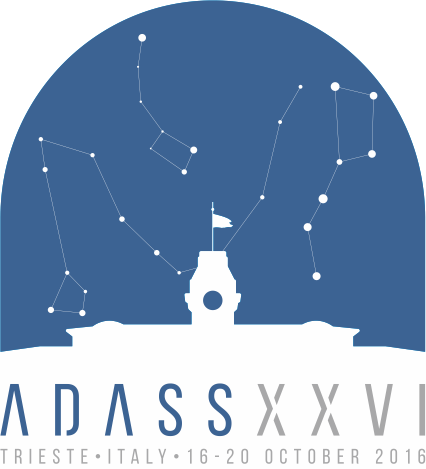Kuemmel Martin
Contact
- Position:
- Ludwig-Maximilians-Universitaet Muenchen
- Address
- Germany
Miscellaneous Information
- Miscellaneous Information
-
Abstract Reference: 30771
Identifier: P1.16
Presentation: Poster presentation
Key Theme: 1 Reduction and Analysis Algorithms for Large Databases and Vice-versa
Euclid DetectionsAuthors:
Kuemmel Martin, Merlin Emanuele, Fontana Adriano, Dole Herve, Boucaud Alexandre, Cabanac Remy, Marco Castellano, Huertas-Company Marc, Israel Holger, Mohr Joseph, Pilo Stefano, Vassallo Thomas, Wetzstein MichaelThe Euclid satellite is an ESA mission scheduled for launch in 2020. It will observe an area of 15,000 deg^2 with two instruments, the Visible Imaging Channel (VIS) and the Near IR Spectrometer and imaging Photometer (NISP). Ground based imaging data in griz from surveys such as the Dark Energy Survey complement the Euclid data to enable photo-z determination. The mission investigates the distance-redshift relationship and the evolution of cosmic structures by measuring shapes and redshifts of galaxies and clusters of galaxies out to redshifts ~2
Generating the multiwavelength catalog from Euclid data with the expected 10^9 objects is a central part of the entire Euclid data reduction pipeline implemented by the Science Ground Segment. In order to find the best strategies and concepts for the object detection we have set up a simulation pipeline to generate Euclid images with the expected depths and resolution (0.2" for VIS data and ~1.0" for ground based data). The simulations are based on a mock Universe with realistic fluxes and morphologies from empirical descriptions and allow the usage of the most recent filter bandpasses from the mission database.
We present the results of applying the Euclid detection to the simulated data and discuss the advantages of using different combined images (coadd, chi-square) for the basic detection and show the design and the prototype implementation of the detection pipeline. We also present the surrounding cataloging pipeline which includes star/galaxy separation and photometry in all bands (as an input to photo-z) and faces a major milestone with the Euclid Science Challenge at the end of 2016.



